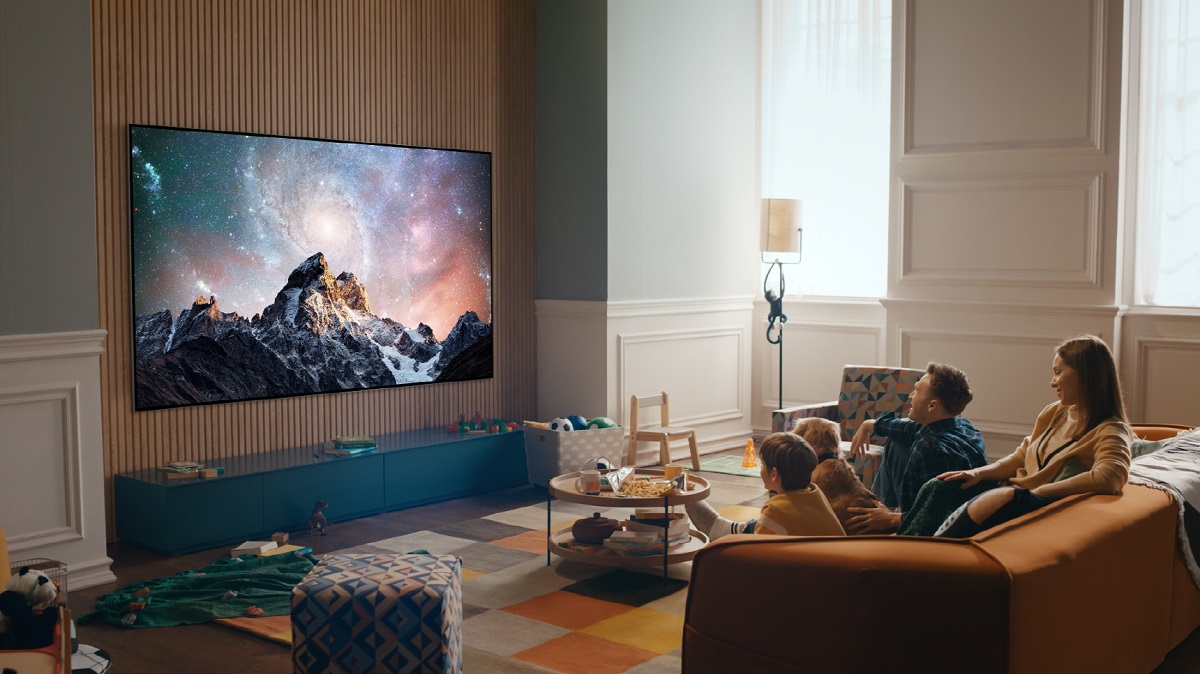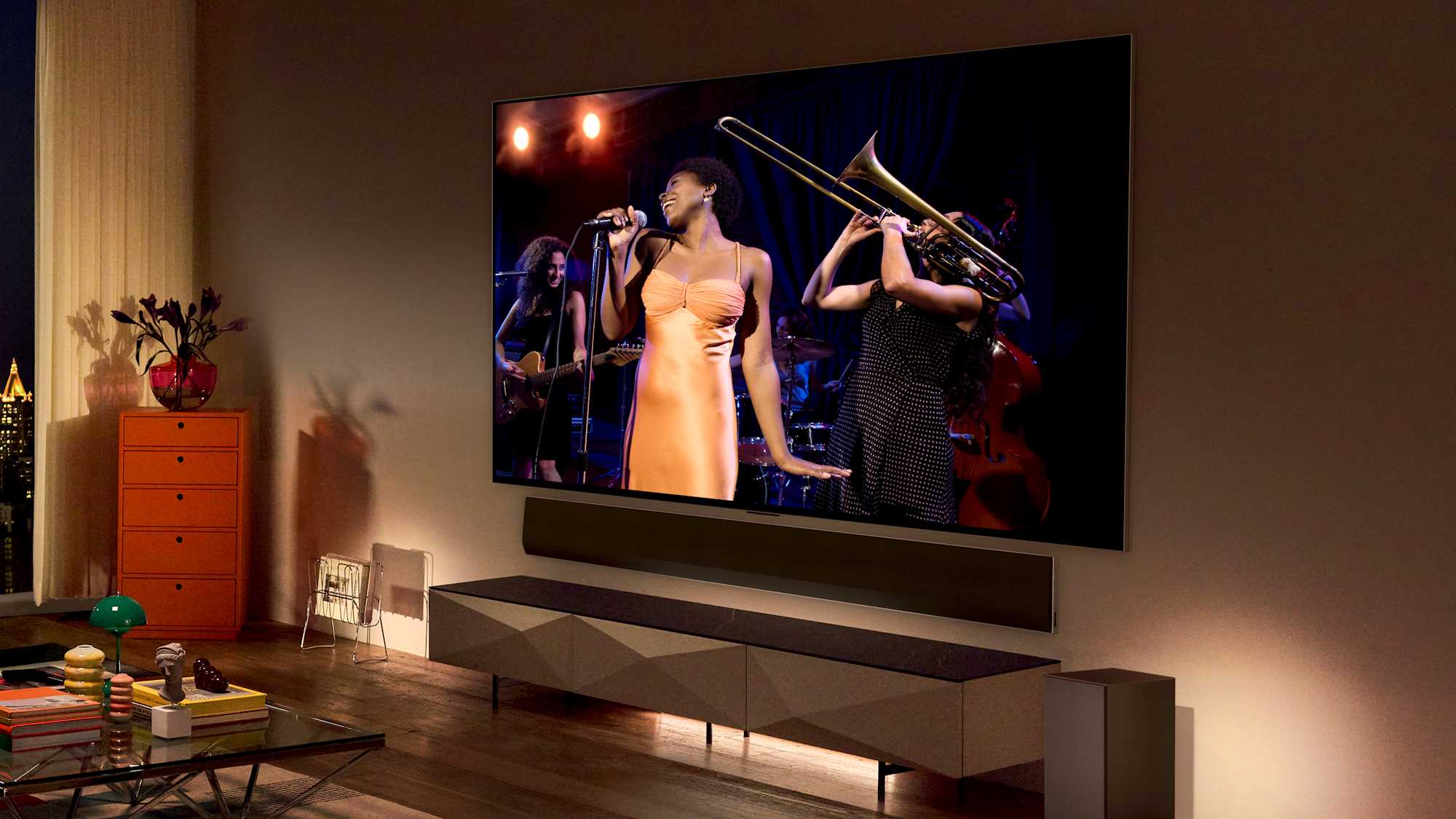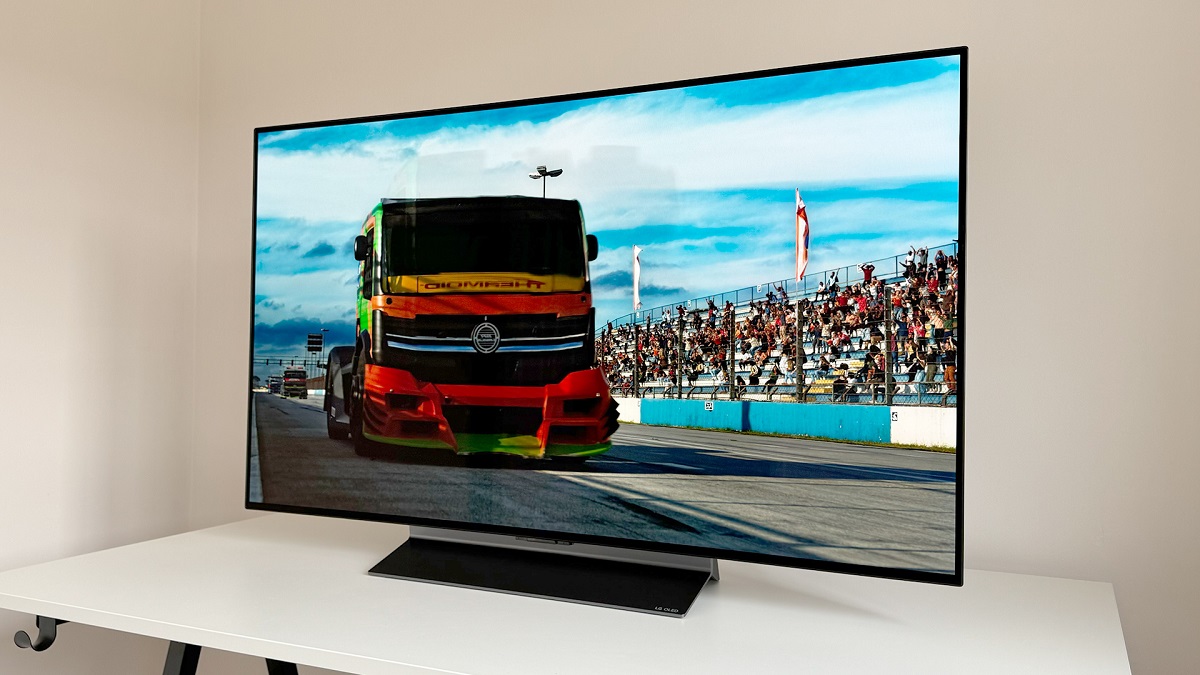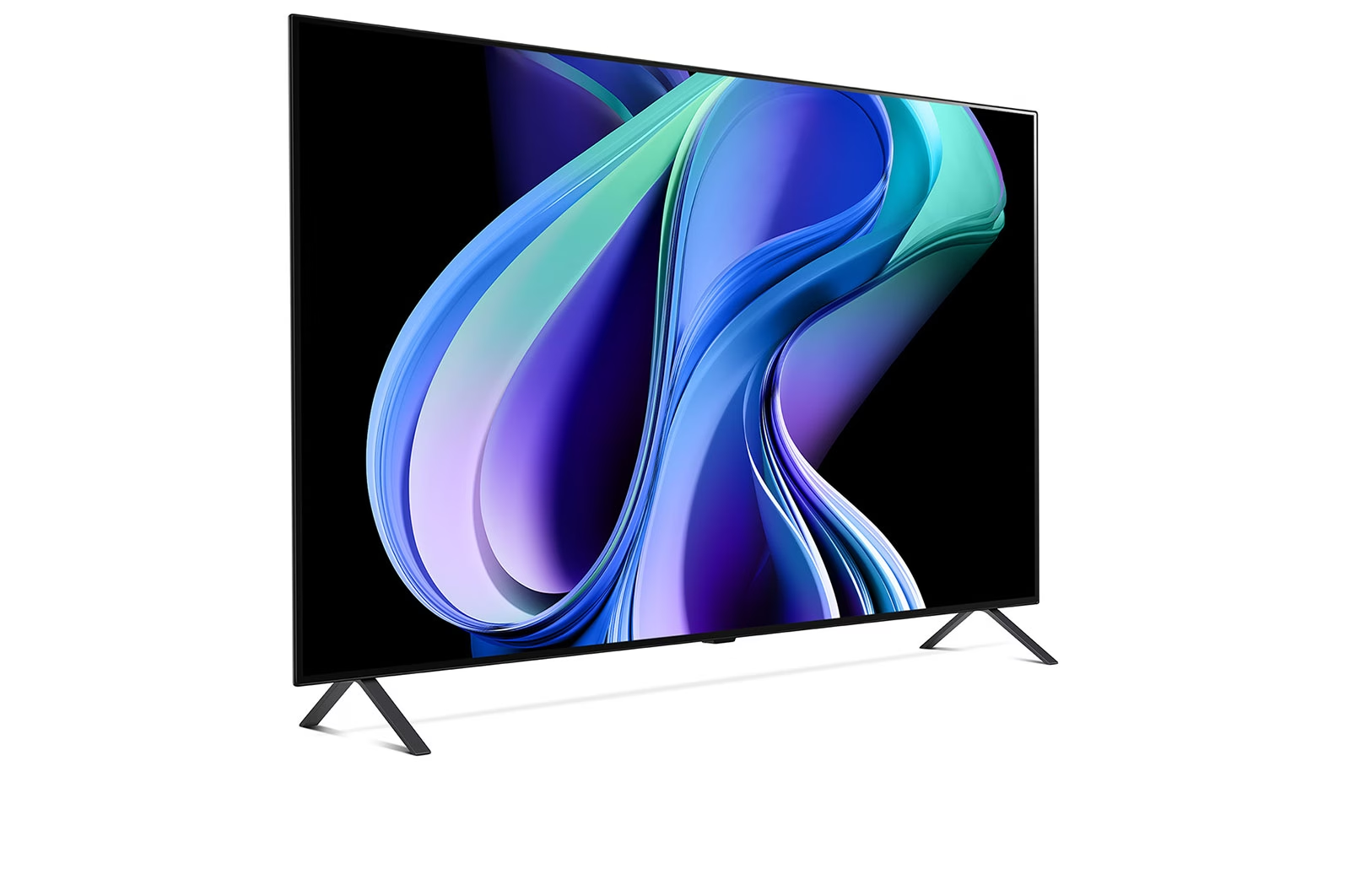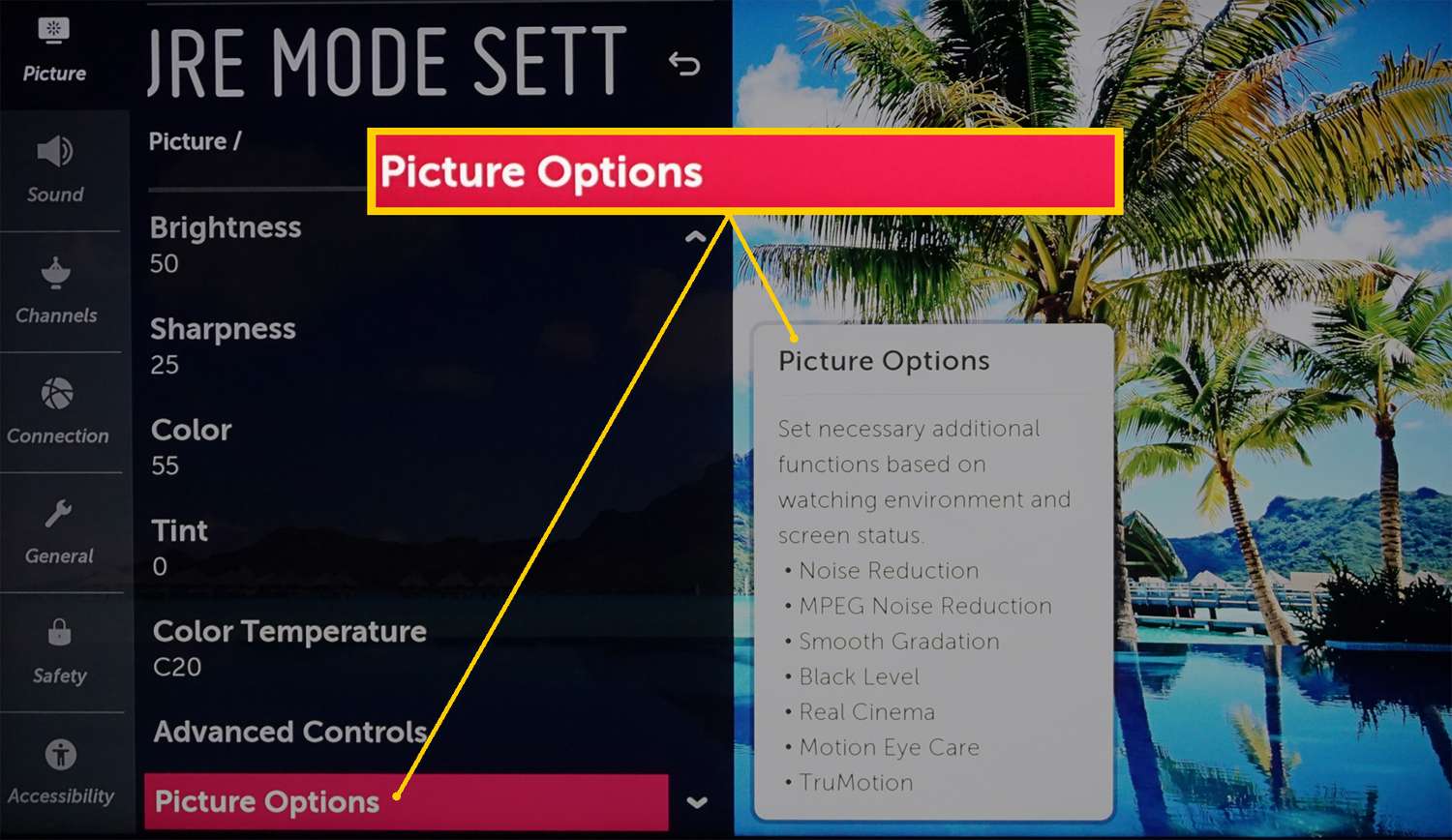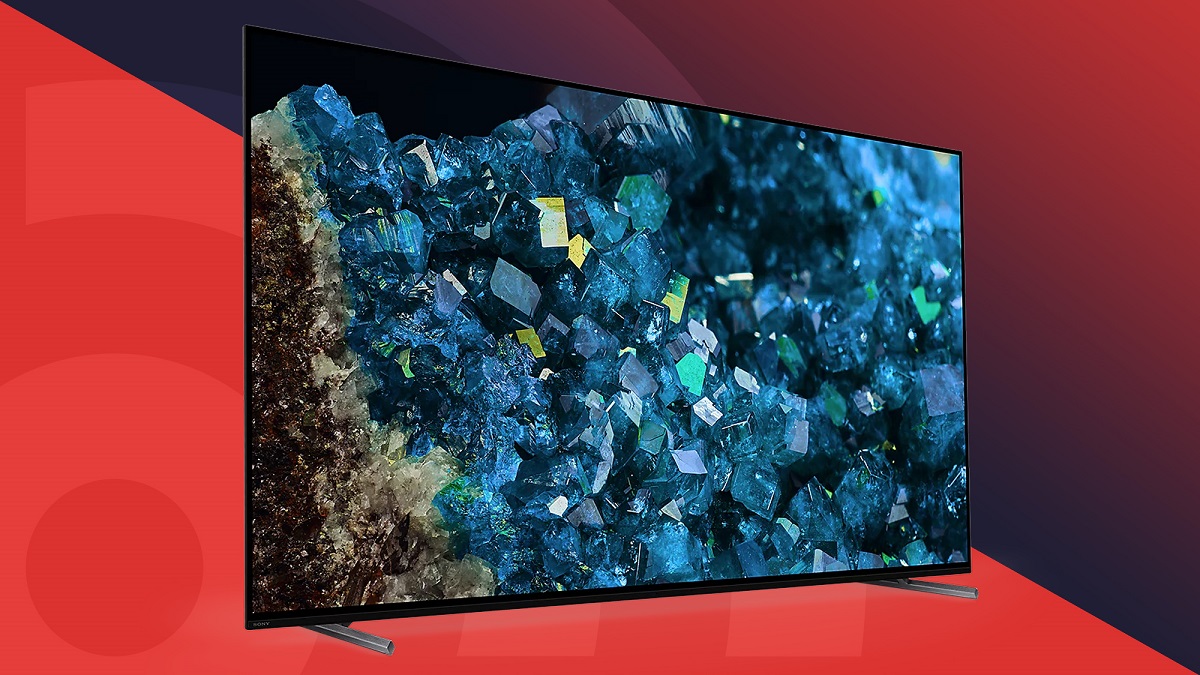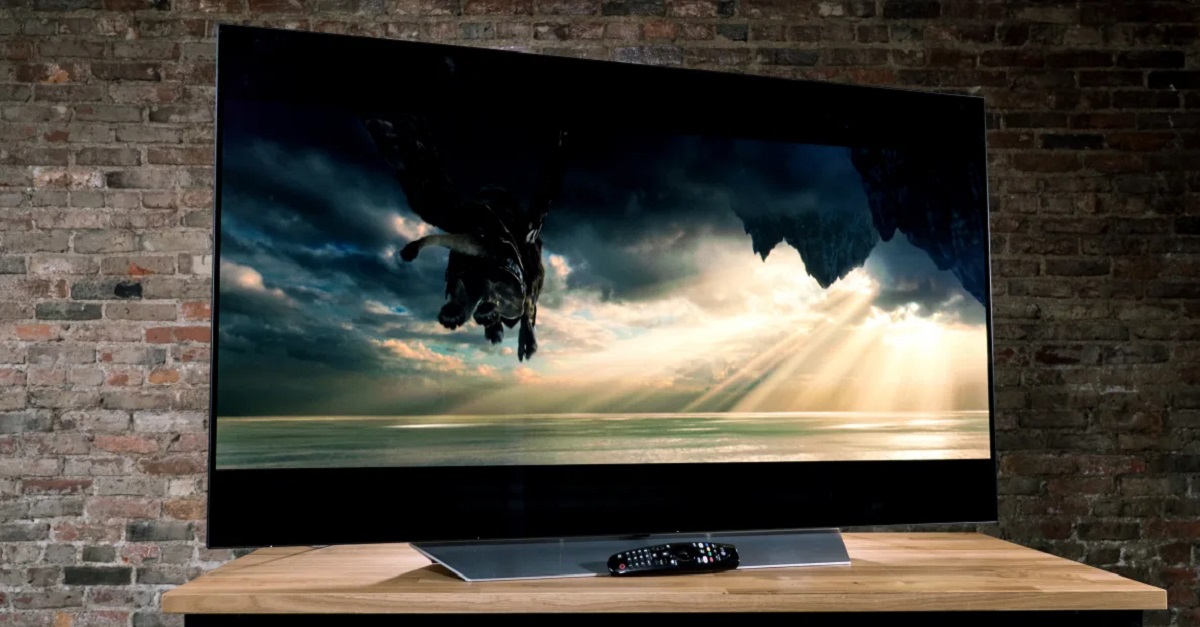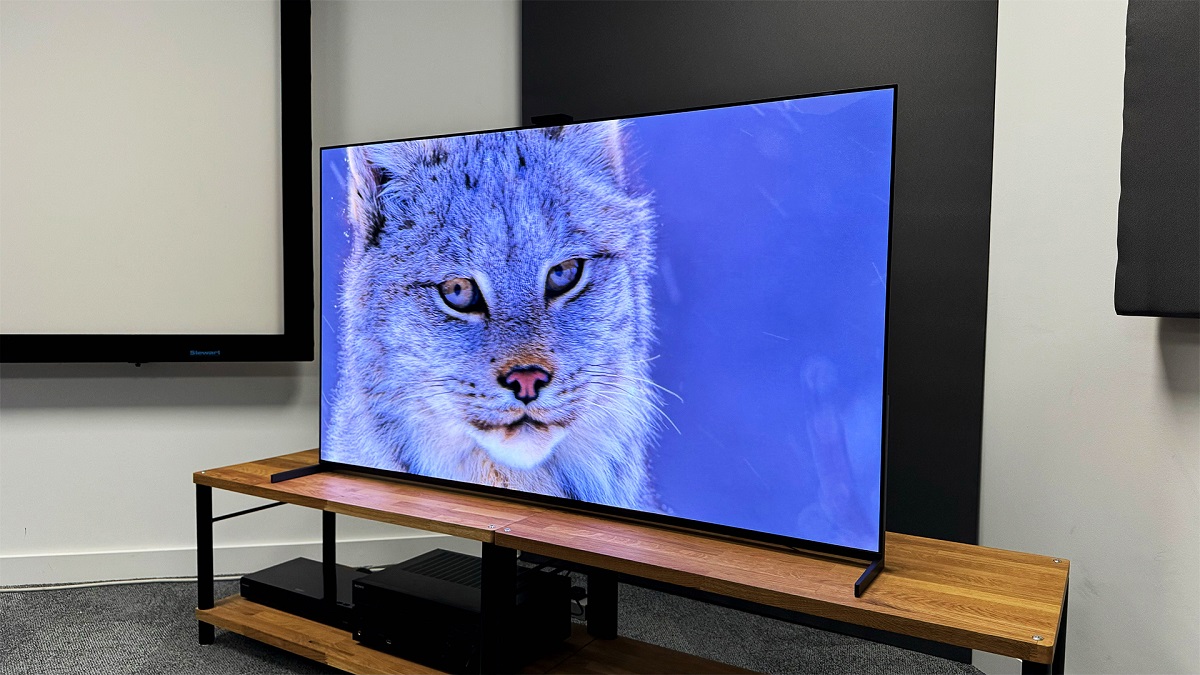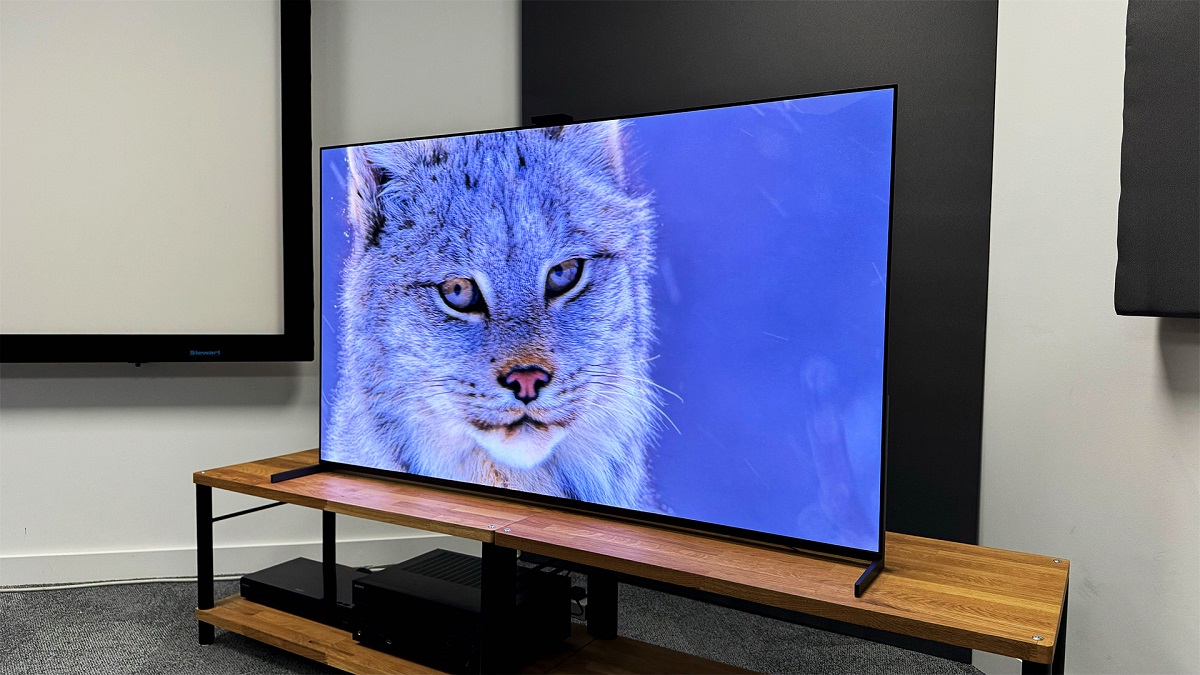Introduction
When it comes to enjoying the ultimate viewing experience on an LG OLED TV, finding the best picture setting is crucial. With their advanced display technology, LG OLED TVs offer stunning picture quality with incredible color accuracy and contrast. However, with so many different picture settings available, it can be challenging to know which one will deliver the optimal viewing experience for your specific needs.
In this article, we will explore the various picture settings available on LG OLED TVs and highlight the benefits and ideal use cases for each mode. From the standard mode to special modes like cinema, HDR effect, and game mode, you’ll learn which setting to choose for a variety of content and viewing environments.
Additionally, we will delve into expert modes such as Technicolor Expert, ISF Expert Dark Room, ISF Expert Bright Room, Expert (Bright Room), and Expert (Dark Room). These modes provide advanced customization options for those seeking a more personalized viewing experience.
We will also discuss important settings within each picture mode, including OLED light, contrast, brightness, color, noise reduction, motion, sharpness, gamma, and color temperature. Understanding how to adjust these settings properly will allow you to fine-tune the picture quality to suit your preferences.
So, whether you are a movie buff looking for that cinematic experience, a gamer seeking optimal performance, or simply someone who wants to make the most of their LG OLED TV, this article will guide you through the various picture settings and help you find the best configuration for your viewing pleasure.
Standard Mode
The Standard Mode on LG OLED TVs is designed to provide accurate and balanced picture settings for everyday viewing. It is a versatile mode that works well for a wide range of content and viewing environments.
In terms of picture quality, Standard Mode offers good color accuracy and contrast without any additional enhancements or adjustments. It aims to reproduce the content exactly as it was intended by the creators, making it a reliable choice for watching movies, TV shows, and general content.
The Standard Mode is also a great option for daytime viewing or well-lit rooms, as it maintains a balanced brightness level that ensures clear visibility without straining the eyes.
When it comes to adjusting specific settings within Standard Mode, it is recommended to start with the default settings and make minor adjustments based on personal preferences. However, you’ll generally find that the default settings already deliver a pleasing viewing experience with accurate colors and overall picture quality.
While Standard Mode may not offer any advanced features or enhancements like other picture modes, its simplicity and reliability make it an excellent choice for everyday viewing. Whether you’re watching your favorite TV shows, streaming content, or browsing through photos, Standard Mode will provide a consistent and enjoyable viewing experience.
Overall, Standard Mode serves as a dependable baseline for picture settings, providing accurate colors and balanced contrast for various types of content and viewing environments. However, if you’re seeking a more immersive cinematic experience or want to optimize your gaming performance, you may want to explore other picture modes such as Cinema Mode or Game Mode, which we’ll discuss in the following sections.
Cinema Mode
If you are a movie enthusiast looking to recreate the cinematic experience in the comfort of your own home, the Cinema Mode on LG OLED TVs is designed specifically for you.
Cinema Mode aims to deliver a picture quality that closely resembles how movies are intended to be viewed by the filmmakers. It provides a more immersive and theatrical experience with enhanced contrast, deep blacks, and accurate colors.
One of the key features of Cinema Mode is its ability to replicate the color grading used in professional movie theaters. This ensures that the colors on your LG OLED TV closely match the intended artistic vision of the filmmakers, creating a more authentic and true-to-life viewing experience.
In addition to color accuracy, Cinema Mode also optimizes the contrast and brightness settings for movie content. It enhances the black levels to provide deeper and more detailed shadows, resulting in a more dynamic and engaging visual experience.
Furthermore, Cinema Mode typically disables unnecessary image processing features, such as motion interpolation or noise reduction, that may affect the cinematic look and feel of the content. This ensures that you are viewing movies as intended, without any artificial enhancements or distortions.
When watching movies in Cinema Mode, it is recommended to dim the lights in your viewing environment to further enhance the immersive experience and reduce distractions. This will allow you to fully appreciate the rich colors, deep blacks, and fine details that OLED technology has to offer.
If you’re a cinephile who loves to watch movies in their purest form and wants to create a home theater experience, Cinema Mode is the ideal picture setting on your LG OLED TV. Just sit back, relax, and let the cinematic magic unfold right in front of your eyes.
HDR Effect Mode
When it comes to enjoying high dynamic range (HDR) content on your LG OLED TV, the HDR Effect Mode is specifically designed to enhance your viewing experience. While not the same as true HDR, this mode simulates HDR-like effects on non-HDR content.
In HDR Effect Mode, your LG OLED TV applies a range of image processing techniques to expand the dynamic range and improve the overall brightness and contrast of non-HDR content. This means that even if you’re watching standard dynamic range (SDR) content, it will appear more vibrant and have a greater sense of depth.
The HDR Effect Mode achieves this by analyzing the content on the screen and selectively adjusting the brightness and contrast levels of different areas of the image. Dark areas become richer and more detailed, while bright areas appear brighter and more pronounced, creating a more immersive viewing experience.
It’s important to note that HDR Effect Mode does not replicate the full capabilities of true HDR content, as it cannot achieve the same level of color accuracy and contrast that HDR provides. However, it can still enhance the visual experience and make non-HDR content more engaging and visually appealing.
When using HDR Effect Mode, it’s recommended to adjust the OLED light setting to achieve the desired level of brightness. Additionally, you may want to make minor adjustments to the contrast and color settings to further optimize the overall picture quality.
While HDR Effect Mode is not a substitute for true HDR content, it does offer a way to enjoy a more enhanced visual experience when watching non-HDR content on your LG OLED TV. Whether you’re streaming movies or playing video games, the HDR Effect Mode can add an extra layer of depth and vibrancy to your viewing experience.
Game Mode
If you’re a passionate gamer, you’ll be glad to know that LG OLED TVs come equipped with a Game Mode specifically tailored to optimize the gaming experience.
Game Mode on LG OLED TVs reduces input lag, allowing for faster and more responsive gameplay. When enabled, the TV bypasses certain image processing algorithms, resulting in a quicker response time between your actions on the controller and what you see on the screen.
Reducing input lag is crucial in fast-paced games where split-second reactions can make a difference. With Game Mode, you’ll have a competitive edge as you’ll experience less delay between your controller inputs and the on-screen action.
In addition to reducing input lag, Game Mode also enhances the overall picture quality for gaming. It optimizes the display settings to prioritize clarity, sharpness, and vibrant colors, ensuring that you don’t miss any crucial details in your gameplay.
Another important aspect of Game Mode is the Auto Low Latency Mode (ALLM) feature. When connected to compatible gaming consoles, such as the PlayStation 5 or Xbox Series X, the TV automatically detects the gaming signal and switches to Game Mode, ensuring the lowest possible input lag without manual intervention.
It’s worth mentioning that when using Game Mode, some advanced picture settings and features, such as motion interpolation and noise reduction, may be disabled or restricted. This is to prioritize the gaming performance and reduce any additional processing that could introduce latency.
Whether you’re a casual gamer or a dedicated competitive player, Game Mode on LG OLED TVs is a must-use feature to enhance your gaming experience. With reduced input lag, optimized picture settings, and seamless compatibility with gaming consoles, you’ll be fully immersed in the world of your favorite games.
Technicolor Expert Mode
The Technicolor Expert Mode on LG OLED TVs is a specialized picture setting that caters to those who seek professional-grade color accuracy and visual quality. Developed in collaboration with Technicolor, a renowned name in the film and television industry, this mode allows users to experience content as the filmmakers intended.
Technicolor Expert Mode is designed to deliver highly accurate color reproduction, adhering closely to professional industry standards. It aims to reproduce colors with precision and fidelity, providing a viewing experience that is as close to the original source material as possible.
With this mode, you can enjoy content with highly accurate colors for an immersive and lifelike viewing experience. Whether you’re watching movies, TV shows, or other multimedia, the Technicolor Expert Mode ensures that the colors on your LG OLED TV are faithful to the original content.
In addition to color accuracy, this mode also optimizes other picture settings to complement the color reproduction. It maintains a balanced contrast ratio and accurately reproduces details in the shadows and highlights, resulting in a more visually dynamic and engaging experience.
It’s important to note that the Technicolor Expert Mode is best suited for viewing well-mastered content, such as Blu-rays or professionally produced movies and TV shows. Some streaming content or user-generated videos might not be fully optimized for this mode, and therefore the visual quality may vary.
To make the most of Technicolor Expert Mode, it’s recommended to adjust the OLED light setting according to your viewing environment. Additionally, you may want to fine-tune other settings, such as brightness, contrast, and sharpness, to achieve the desired viewing experience.
If you’re an enthusiast who values accurate color reproduction and wants to enjoy content as it was intended by the professionals, the Technicolor Expert Mode on your LG OLED TV is a perfect choice. It allows you to dive into a world of remarkable color accuracy and visual precision, bringing your favorite movies and shows to life.
ISF Expert Dark Room Mode
The ISF Expert Dark Room Mode on LG OLED TVs is specifically designed for optimizing the picture quality in a dark room environment. This mode is developed by the Imaging Science Foundation (ISF), a renowned organization specializing in professional calibration.
ISF Expert Dark Room Mode is ideal for those who prefer to watch movies or play games in a dimly lit or completely darkened room. It adjusts the picture settings to deliver optimal contrast, accurate colors, and enhanced details in dark scenes, providing a truly immersive viewing experience.
One of the key features of ISF Expert Dark Room Mode is its ability to reproduce deep blacks. OLED technology allows the TV to turn off individual pixels, resulting in pure black colors and excellent contrast. Combined with the mode’s calibrated settings, this creates a stunning visual experience, especially in scenes with significant shadow or dark elements.
In addition to black levels, ISF Expert Dark Room Mode fine-tunes other settings to ensure accurate color reproduction and improved detail visibility in low-light conditions. It provides excellent color accuracy and maintains a proper balance between brightness and contrast, bringing out the subtle nuances in the content you’re watching.
Professional calibration is recommended for the ISF Expert Dark Room Mode to achieve the highest level of precision. Calibrating the TV according to the specific characteristics of the viewing environment can further enhance the picture quality and ensure accurate colors.
If you enjoy watching movies or playing games in a dark room setting and want to experience the true potential of your LG OLED TV, the ISF Expert Dark Room Mode is the perfect choice. It combines deep blacks, accurate colors, and optimized settings to create a visually stunning and immersive entertainment experience.
ISF Expert Bright Room Mode
The ISF Expert Bright Room Mode on LG OLED TVs is specifically designed to optimize picture quality in a brightly lit or well-lit viewing environment. This mode, developed by the Imaging Science Foundation (ISF), provides enhanced visibility, vibrant colors, and improved image clarity in such lighting conditions.
ISF Expert Bright Room Mode adjusts the TV’s picture settings to deliver optimal brightness levels, accurate colors, and reduced glare, ensuring that you can enjoy your favorite content without any visual discomfort or loss of detail.
One of the key features of ISF Expert Bright Room Mode is its ability to manage ambient light effectively. It adjusts the TV’s brightness and contrast settings to ensure that the image remains clear and visible, even with the presence of external light sources. This prevents the image from appearing washed out or losing detail in bright surroundings.
In addition to managing ambient light, ISF Expert Bright Room Mode also enhances color accuracy to ensure vibrant and natural-looking colors. With the optimized settings, the TV reproduces colors with precision and maintains the intended color tones, allowing you to fully enjoy the richness and depth of your favorite movies, shows, and games.
Professional calibration is highly recommended to achieve the best results with ISF Expert Bright Room Mode. Calibration accounts for the specific characteristics of the viewing environment, such as the type and intensity of ambient light, to further optimize the picture quality.
If you typically watch content in a brightly lit room or an environment with plenty of natural light, the ISF Expert Bright Room Mode is the ideal choice for your LG OLED TV. It ensures that you can enjoy vibrant, clear, and detailed imagery, even with external light sources present, providing an immersive viewing experience regardless of the lighting conditions.
Expert (Bright Room) Mode
The Expert (Bright Room) Mode on LG OLED TVs is a specialized picture setting that allows advanced users to fine-tune the TV’s display parameters for optimal picture quality in a brightly lit viewing environment. This mode provides extensive customization options to achieve the best visual experience in such conditions.
In Expert (Bright Room) Mode, you have full control over various picture settings, including brightness, contrast, color, and sharpness. This allows you to customize the TV’s performance based on your preferences and the specific characteristics of your brightly lit room.
To ensure excellent visibility in a well-lit environment, you can increase the TV’s brightness setting. This will help the image to stand out and combat any potential glare or washed-out effect caused by external light sources.
Additionally, adjusting the contrast setting can help to maintain a proper balance between bright and dark areas of the image. This ensures that you can perceive both the highlights and shadows accurately, enhancing the overall image detail and depth.
In Expert (Bright Room) Mode, you also have the option to fine-tune the color settings to achieve the desired color accuracy and vibrancy. This can compensate for any potential color shifts or loss of saturation that may occur under bright lighting conditions.
Furthermore, adjusting the sharpness setting can enhance the overall image clarity and ensure that details are well-defined, even in a brightly lit room. However, it’s important not to apply excessive sharpness, as it may result in unnatural artifacts or image noise.
It’s worth noting that achieving optimal image quality in a brightly lit environment involves finding the right balance between brightness, contrast, color, and sharpness settings. Experimenting with these settings and making subtle adjustments based on your personal preferences is key to achieving a visually pleasing and immersive experience.
If you’re an advanced user who wants fine-grained control over your LG OLED TV’s picture quality in a brightly lit room, Expert (Bright Room) Mode is the perfect choice. With its customization options, you can tailor the TV’s display parameters to suit your preferences and create an outstanding viewing experience in any well-lit environment.
Expert (Dark Room) Mode
The Expert (Dark Room) Mode on LG OLED TVs is a specialized picture setting that allows advanced users to fine-tune the TV’s display parameters for optimal picture quality in a dimly lit or completely darkened viewing environment. This mode provides extensive customization options to achieve the best visual experience in such conditions.
Expert (Dark Room) Mode gives you full control over various picture settings, including brightness, contrast, color, and sharpness. This allows you to customize the TV’s performance based on your preferences and the specific characteristics of your dark room.
In a dark room, reducing the TV’s brightness setting can enhance the viewing experience by minimizing eye strain and ensuring that the image is not excessively bright. This adjustment allows you to fully appreciate the deep blacks and rich shadow details that OLED technology provides.
Controlling the contrast setting in Expert (Dark Room) Mode is crucial for achieving the optimal balance between dark and bright areas of the image. Fine-tuning this setting ensures that you can see details in both shadowed and highlighted portions of the content, contributing to a more immersive viewing experience.
Achieving accurate color reproduction is another aspect to consider in Expert (Dark Room) Mode. Dark room environments often reveal more subtle color variations and nuances. Adjusting the color settings allows you to enjoy rich, vibrant colors with accurate saturation levels and tones.
Furthermore, the sharpness setting can be fine-tuned in Expert (Dark Room) Mode to ensure that the image’s details are well-defined and crisp. However, it’s important to exercise moderation to prevent introducing artifacts or excessive image noise.
Expert (Dark Room) Mode provides advanced users with the flexibility to customize their LG OLED TV’s picture quality to suit their preferences in a dimly lit or dark room. Experimenting with various adjustments and finding the perfect balance between brightness, contrast, color, and sharpness enables you to create an exceptional viewing experience tailored to your specific environment.
If you are a discerning viewer who values optimized picture quality in a dimly lit or dark room, Expert (Dark Room) Mode is the ideal choice. Its extensive customization options allow you to fine-tune the TV’s display parameters and create an immersive and visually stunning experience for your dark room viewing sessions.
OLED Light Setting
The OLED Light setting on LG OLED TVs controls the brightness level of the TV’s display by adjusting the intensity of the individual OLED pixels. This setting plays a crucial role in achieving the desired picture quality and optimizing the viewing experience.
By adjusting the OLED Light setting, you can control the overall brightness of the image. Increasing the OLED Light setting makes the picture brighter, while decreasing it reduces the overall brightness of the display.
When setting the OLED Light, it’s important to consider the ambient lighting conditions of your viewing environment. In a brightly lit room, a higher OLED Light setting may be necessary to counteract external light sources and maintain a vibrant and visually engaging image.
Conversely, in a dimly lit or completely dark room, lowering the OLED Light setting helps to enhance the perception of deep blacks and improves contrast, offering a more immersive viewing experience especially when watching content with darker scenes.
It’s worth noting that finding the optimal OLED Light setting involves balancing brightness with other picture settings such as contrast, gamma, and color. The goal is to achieve a well-calibrated picture that retains fine detail, accurate colors, and an appropriate level of brightness that suits your viewing preferences.
For most users, starting with the default OLED Light setting and making slight adjustments based on personal preference is a good approach. This allows you to fine-tune the brightness levels to match the specific lighting conditions of your room and create a visually pleasing viewing experience.
In summary, the OLED Light setting gives you control over the overall brightness of your LG OLED TV’s display. Adjusting this setting allows you to customize the brightness levels based on the lighting conditions of your room, resulting in an optimized and enjoyable viewing experience.
Contrast Setting
The Contrast setting on LG OLED TVs controls the difference between the brightest and darkest areas of the image. It plays a crucial role in enhancing image quality, depth, and overall visual experience.
Adjusting the Contrast setting allows you to optimize the balance between bright highlights and deep blacks, providing greater definition and detail to the picture. A higher Contrast setting increases the difference between bright and dark areas, resulting in a more pronounced and dynamic image.
Increase the Contrast setting to make the bright areas of the image more vibrant and impactful, while still maintaining the integrity and richness of the darker areas. This adjustment can help bring out details in highlights and create a more visually engaging experience.
On the other hand, reducing the Contrast setting can be helpful if you prefer a more subtle and balanced image. This can help to preserve details in both bright and dark areas, preventing the loss of fine nuances in the picture.
When adjusting the Contrast setting, it’s important to consider the specific content you’re watching along with the lighting conditions of your viewing environment. For instance, a higher Contrast setting may work well for HDR content or in a brightly lit room, while a lower setting may be more suitable for standard dynamic range (SDR) content or in a dimly lit environment.
Additionally, it’s crucial to find the right balance between Contrast and other picture settings, such as brightness, gamma, and color, to achieve the optimal visual result. Making subtle adjustments while observing the impact on image depth and detail will help you find the ideal Contrast setting for your specific preferences and viewing conditions.
In summary, the Contrast setting on LG OLED TVs allows you to fine-tune the balance between bright and dark areas of the image. Adjusting this setting can enhance image depth, detail, and overall visual experience, resulting in a more captivating and engaging viewing experience.
Brightness Setting
The Brightness setting on LG OLED TVs controls the overall level of luminance in the image. It determines how light or dark the picture appears on the screen and plays a crucial role in achieving optimal image quality, visibility, and contrast.
Adjusting the Brightness setting allows you to set the desired level of luminance, ensuring that the image is neither too dark nor too bright. Finding the right balance is important as it directly affects the clarity, detail, and overall visual experience.
Increasing the Brightness setting makes the picture appear brighter and more visible, particularly in darker or poorly lit scenes. This adjustment helps to enhance shadow detail, making it easier to see nuances in dark areas and improving the overall contrast of the image.
Conversely, decreasing the Brightness setting makes the image appear darker. This adjustment can be beneficial in well-lit rooms or when watching content with predominantly bright scenes, as it helps to prevent any loss of detail in highlights and maintains a balanced overall image.
When adjusting the Brightness setting, it is important to consider the specific content you are watching as well as the lighting conditions of your viewing environment. Assessing the brightness level of the room and the characteristics of the content (such as HDR or SDR) can guide you in finding the optimal setting.
Another factor to consider is the interaction between the Brightness setting and other picture settings, such as contrast, OLED Light, and gamma. These settings should be adjusted in conjunction to achieve the best overall image quality and balance.
While it is advisable to start with the default Brightness setting, it may be necessary to make subtle adjustments based on individual preferences and the specific characteristics of your viewing environment.
In summary, the Brightness setting on LG OLED TVs allows you to control the overall luminance level of the picture. Adjusting this setting helps to optimize visibility, detail, and contrast, ensuring a visually pleasing viewing experience that is well-suited to your specific viewing environment and content.
Color Setting
The Color setting on LG OLED TVs allows you to control and adjust the color reproduction of the display. It plays a crucial role in achieving accurate and vibrant colors, ensuring an immersive and visually pleasing viewing experience.
By adjusting the Color setting, you can fine-tune the balance and intensity of the primary colors (red, green, and blue) as well as secondary colors (cyan, magenta, and yellow). This allows you to customize the overall color accuracy and saturation to match your preferences and viewing conditions.
Increasing the Color setting enhances the intensity and vibrancy of the colors, resulting in a more vivid and eye-catching image. This adjustment can be beneficial for content that is designed to be visually striking, such as animations or vibrant landscapes.
Conversely, decreasing the Color setting can be useful in achieving a more natural and balanced color reproduction. This adjustment can prevent oversaturation of colors, ensuring that the image appears more realistic and accurate, especially for content that requires more subtle and nuanced color tones, such as skin tones or natural landscapes.
While adjusting the Color setting, it’s important to ensure that the colors remain true to the original source material. Some users may prefer more saturated or vibrant colors, while others may prefer a more neutral and accurate color reproduction. Striking the right balance in the Color setting can result in a visually pleasing and immersive experience.
When adjusting the Color setting, it’s also essential to consider other picture settings, such as contrast, brightness, and gamma, as they can interact with the overall color balance. Fine-tuning these settings in conjunction with the Color setting can help achieve the desired overall picture quality.
Starting with the default Color setting and making subtle adjustments based on personal preferences and content type is a good approach. Regular calibration using test patterns or professional calibration tools can further enhance color accuracy and ensure an optimal viewing experience.
In summary, the Color setting on LG OLED TVs provides you with control over the color reproduction of the display. Adjusting this setting allows you to fine-tune color accuracy and saturation levels to achieve vibrant and visually appealing images that suit your personal preferences and viewing conditions.
Noise Reduction Setting
The Noise Reduction setting on LG OLED TVs is a feature that helps improve the overall picture quality by reducing visual noise in the image. It is designed to minimize unwanted artifacts and interference, resulting in a cleaner and more refined viewing experience.
Noise in the image can appear as random static, graininess, or distortion, especially in low-quality or compressed content. The Noise Reduction setting works by analyzing the image and applying algorithms to reduce or eliminate these unwanted visual disturbances.
Adjusting the Noise Reduction setting allows you to find the right balance between reducing noise and preserving the fine details in the image. Higher noise reduction levels can effectively reduce visible noise but may also result in a loss of image sharpness or fine details. On the other hand, lower noise reduction levels may retain more details but may also allow some noise to be visible.
When it comes to the Noise Reduction setting, it’s important to consider the quality of the source content. Higher-quality content, such as Blu-ray movies or high-definition streaming, generally requires less aggressive noise reduction, as the inherent quality of the content reduces the likelihood of noise being present. However, lower-quality content, such as older DVDs or heavily compressed videos, may benefit from higher noise reduction levels to mitigate the visual artifacts associated with lower quality.
It’s worth noting that while noise reduction can improve the visual quality of the image, it is a subjective preference and may vary depending on individual viewing preferences. Some viewers may prefer a clean and smooth image, while others may prioritize retaining as much detail and sharpness as possible.
In terms of the settings menu, noise reduction options may include different levels or modes, such as low, medium, high, or an off option. Experimenting with these settings and observing their impact on the image can help you determine the optimal noise reduction level for your specific viewing preferences and content type.
In summary, the Noise Reduction setting on LG OLED TVs allows you to minimize unwanted visual noise and artifacts in the image. By adjusting this setting to find the right balance between noise reduction and preserving image details, you can enhance the overall picture quality and create a more visually pleasing viewing experience.
Motion Setting
The Motion setting on LG OLED TVs is a feature that affects how motion is displayed on the screen. It aims to improve the smoothness and clarity of fast-paced action scenes, reducing motion blur and judder, and enhancing the overall viewing experience.
Motion settings typically offer different options such as Off, Smooth, Clear, or Custom, each providing a different level of motion enhancement. These settings utilize various techniques, such as frame interpolation or backlight scanning, to reduce motion blur and create a smoother motion effect.
Enabling motion enhancement can greatly benefit content with fast-moving action, such as sports, video games, or action-packed movies. It can make the motion appear more fluid and natural, resulting in a more immersive viewing experience.
However, it’s important to note that motion enhancement can also introduce artifacts or unwanted side effects. These artifacts may include the “Soap Opera Effect,” where the image appears overly smooth or artificial. Some viewers may find this effect distracting or unnatural, impacting the overall cinematic feel of movies and TV shows.
When adjusting the Motion setting, it’s recommended to find the right balance between smooth motion and maintaining the cinematic look. Some prefer to disable motion enhancement entirely to preserve the original cinematic feel, while others may prefer a subtle enhancement that reduces motion blur without compromising the overall visual quality.
Additionally, the amount of motion enhancement needed may vary depending on the content being watched. For example, sports or fast-paced action movies may benefit from a higher level of motion enhancement, while slower-paced dramas or documentaries may require less or even no motion enhancement.
Experimenting with different Motion settings and observing their impact on the quality and smoothness of motion is crucial to finding the right balance for your viewing preferences and content. It’s worth noting that personal preference plays a significant role in determining the optimal Motion setting.
In summary, the Motion setting on LG OLED TVs offers the ability to enhance the smoothness and clarity of motion. Adjusting this setting to find the right balance between motion enhancement and maintaining the cinematic feel can greatly improve the viewing experience, particularly for fast-paced content. However, it’s important to find the optimal setting that suits your personal preferences and the specific characteristics of the content being viewed.
Sharpness Setting
The Sharpness setting on LG OLED TVs allows you to adjust the level of sharpness or fine detail in the displayed image. It affects how defined and crisp the edges of objects appear on the screen, influencing the overall image clarity and sharpness.
Increasing the Sharpness setting enhances the edges of objects, making them appear more clearly defined and distinct. This adjustment can make the image appear sharper and more detailed, particularly in scenes with intricate textures or fine lines. However, it’s important to note that excessive sharpness can introduce unwanted artifacts or exaggerate image noise.
Conversely, reducing the Sharpness setting can create a softer and more natural-looking image. This adjustment is beneficial for content that benefits from a more subtle or organic appearance, such as movies or television shows.
The optimal Sharpness setting depends on various factors, including personal preference, the quality of the source content, and the resolution of the display. It’s important to strike a balance between preserving image details and avoiding unnecessary artifacts or unnatural sharpness.
When adjusting the Sharpness setting, it’s recommended to do so while viewing actual content rather than focusing on test patterns or static images. This allows you to assess the impact of the setting on real-world content, where the level of sharpness can vary depending on the characteristics and quality of the source.
It’s worth noting that the perceived sharpness of the image can also be influenced by other factors, such as the quality of the source content, the display’s resolution, and the viewing distance. These factors should be taken into consideration when adjusting the Sharpness setting to achieve the desired image quality.
Additionally, it’s important to remember that the Sharpness setting should be seen as a tool for refining the image rather than achieving an artificially heightened level of sharpness. Moderation and finding the right balance between preserving details and avoiding excessive sharpness will help achieve the most pleasing and natural-looking image quality.
In summary, the Sharpness setting on LG OLED TVs allows you to fine-tune the level of sharpness and detail in the displayed image. Adjusting this setting, while considering various factors including source quality and personal preference, helps to strike the right balance between image clarity, detail preservation, and a natural-looking appearance.
Gamma Setting
The Gamma setting on LG OLED TVs allows you to adjust the gamma curve of the displayed image. This setting determines the relationship between the input signal and the resulting brightness levels on the screen, affecting the overall brightness distribution and contrast of the image.
Gamma is measured on a scale, typically denoted by a number (e.g., 2.2). Higher gamma values result in a darker image with more emphasis on shadow detail, while lower gamma values produce a brighter image with more emphasis on highlight detail.
Adjusting the Gamma setting is important for optimizing the image’s tonal range, ensuring that details in both shadowed and highlighted areas are visible and well-balanced. The goal is to achieve a gamma value that renders the image with accurate and impactful contrast.
The optimal Gamma setting depends on the lighting conditions of your viewing environment, the source content, and personal preference. In a dimly lit or dark room, a higher gamma value may help enhance shadow detail and create a more cinematic experience. In a well-lit room, a lower gamma value can prevent the image from appearing too dark and maintain better visibility.
It’s important to note that the source content itself can have varying gamma characteristics. Some content may be mastered with a specific gamma curve in mind, which aligns with industry standards or creative intentions. Adjusting the Gamma setting allows you to fine-tune the display to match the gamma characteristics of the content you’re watching.
When adjusting the Gamma setting, it’s recommended to start by selecting a predefined gamma curve that best suits your viewing environment and preferences. However, if you prefer more precise control, some OLED TVs also provide a custom gamma option, allowing you to manually adjust the gamma curve to your desired preference.
Experimentation plays a crucial role in finding the optimal Gamma setting. Observing the impact of different gamma values on the image’s contrast, shadow detail, and overall visual experience will help determine the best setting that suits your specific needs.
In summary, the Gamma setting on LG OLED TVs allows you to adjust the brightness distribution and contrast of the displayed image. Fine-tuning the Gamma setting ensures accurate and impactful contrast, enhancing the visibility of both shadow and highlight details. Consider the viewing environment, source content, and personal preferences when finding the optimal Gamma setting for a visually satisfying and immersive viewing experience.
Color Temperature Setting
The Color Temperature setting on LG OLED TVs allows you to adjust the color balance of the displayed image. It influences the overall warmth or coolness of the colors on the screen by controlling the balance between red, green, and blue light.
The Color Temperature setting is measured in Kelvin (K) and offers different options such as Cool, Normal, Warm, or even custom Kelvin values. Each option represents a different balance of color temperatures, ranging from cooler (bluish) to warmer (reddish) tones.
Adjusting the Color Temperature setting is important for achieving accurate and natural-looking colors that match your preferences and viewing environment. It allows you to fine-tune the white balance of the image, ensuring that whites appear neutral and that other colors are faithfully represented.
Cooler color temperatures (higher Kelvin values) tend to produce a bluish-white image, which can create a sense of coolness or clinical precision. This setting may be preferred in brightly lit environments or when viewing content that benefits from a sharper, more clinical aesthetic.
Warmer color temperatures (lower Kelvin values), on the other hand, create a reddish-white image that adds warmth and depth to the overall picture. This setting can be suitable for dimly lit or dark rooms, as it helps to reduce eye strain and creates a more comfortable and relaxing viewing experience.
It’s important to note that the optimal Color Temperature setting depends on personal preference and the viewing environment. Factors such as the lighting conditions of your room, the specific content being viewed, and individual color perception can influence the preferred color temperature.
Additionally, the Color Temperature setting can interact with other picture settings, such as contrast and brightness. Finding the right balance between color temperature, contrast, and brightness ensures a harmonious and accurate representation of colors in the image.
When adjusting the Color Temperature setting, it’s recommended to start with the predefined options (Cool, Normal, Warm) and observe how each setting affects the overall color balance. Fine-tuning the color temperature to find the most pleasing and accurate representation is best done by comparing different options while viewing real-world content.
In summary, the Color Temperature setting on LG OLED TVs allows you to adjust the color balance of the displayed image. Fine-tuning this setting ensures accurate and pleasing color reproduction, matching your preferences and the viewing environment. Consider factors such as room lighting, content type, and personal preferences when adjusting the Color Temperature setting to achieve a visually satisfying and immersive viewing experience.
Conclusion
When it comes to optimizing the picture quality on your LG OLED TV, understanding and utilizing the various picture settings can make a significant difference in your viewing experience. From the Standard Mode, which offers a reliable and balanced setting for everyday viewing, to specialized modes like Cinema Mode for a more cinematic experience, HDR Effect Mode for enhanced visual impact, and Game Mode for optimized gaming performance, each mode caters to specific preferences and viewing environments.
For those seeking even more control and customization, the Expert modes such as Technicolor Expert, ISF Expert Dark Room, ISF Expert Bright Room, Expert (Bright Room), and Expert (Dark Room) provide advanced options for fine-tuning picture settings to achieve professional-grade color accuracy and image quality.
Within each picture mode, adjusting settings such as OLED Light, Contrast, Brightness, Color, Noise Reduction, Motion, Sharpness, Gamma, and Color Temperature allows you to further optimize the displayed image to your liking and viewing environment.
However, it’s important to note that individual preferences may vary, and finding the optimal settings for your specific needs often involves experimentation and consideration of viewing conditions, content type, and personal preferences.
Remember to strike a balance between enhancing picture quality and preserving the intent of the content creators. Making subtle adjustments while evaluating real-world content is key to achieving the desired picture quality.
So, whether you’re a movie enthusiast, a avid gamer, or simply someone who wants to enjoy stunning visuals on your LG OLED TV, experimenting with the different picture settings and adjusting them according to your preferences and viewing environment will help you unlock the true potential of your TV’s display technology, providing you with a captivating and immersive viewing experience.







